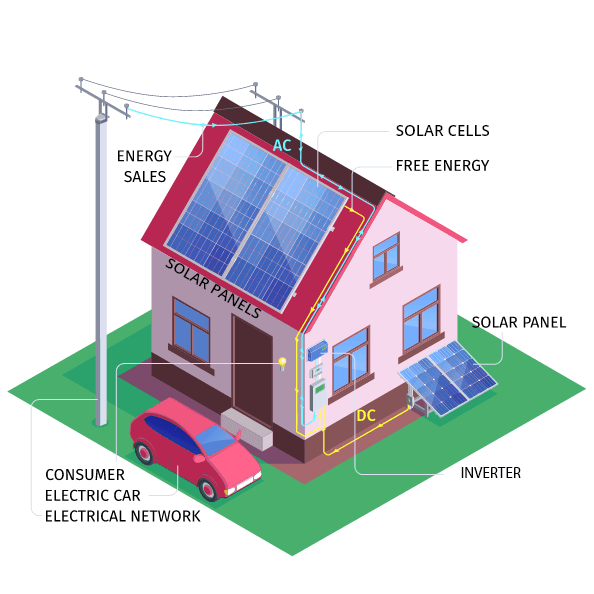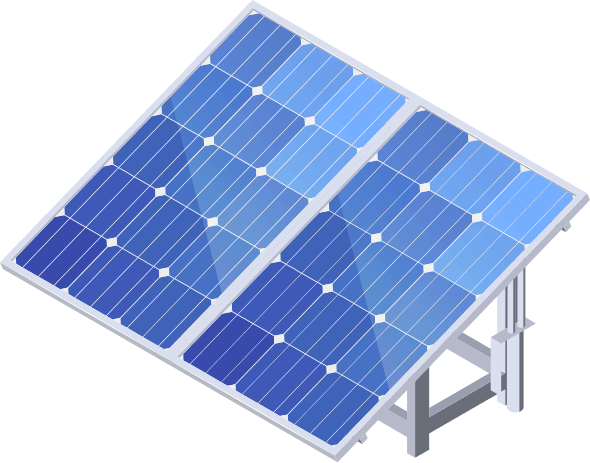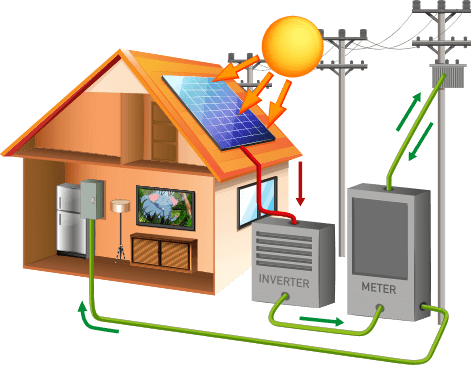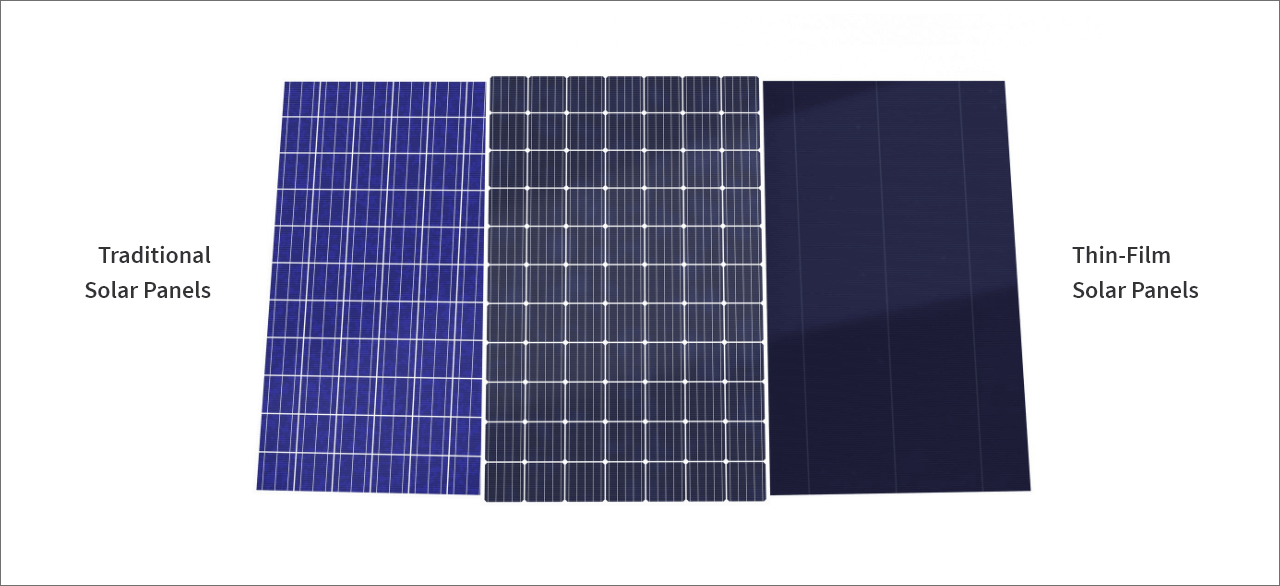Call us at: 9537661151
Call us at: 9537661151
Knowledge Center by AKV Energy Solutions

Solar panels are made up of an array of solar cells held together by glass, a laminate material (EVA), and an aluminum frame.
Solar cells are able to capture energy from the sun to generate electricity, much like a leaf catching sunlight to generate food for a plant. One solar cell doesn’t produce much on its own—maybe enough to power a calculator. Therefore, an array of solar cells is connected to create one large solar panel. Panels are linked together to provide enough energy to power your home.
Most solar cells are made from silicon, which is also used in computers and smartphones. Silicon is a semiconductor that has photovoltaic (PV) properties, meaning it generates voltage and electric current when exposed to light.
To make solar cells, silicon is mixed with small amounts of phosphorus or boron to create an abundance of electrons (p-type) or lack of electrons (n-type). The different types of silicon are made into plates and sandwiched together. Metallic conductors are attached to each side, and everything is held in place by a laminate material.



Monocrystalline solar panels are made up of single crystal silicon that is melted into an ingot and thinly sliced. This creates a more refined, more efficient, but also more expensive product. Monocrystalline solar panels are a great choice for homes where roof space is limited since they’re so efficient. They usually appear black in color.
Polycrystalline panels are made up of lots of silicon crystals melted together. They’re not quite as efficient as monocrystalline panels, but they’re also more affordable. If you have plenty of space, this may be a good choice for your home. Polycrystalline solar panels will appear dark blue.
Solar panels collect energy from the sun and convert it into electricity for your home. Whenever the sun’s out, you’ll be generating your own electricity—free of charge.